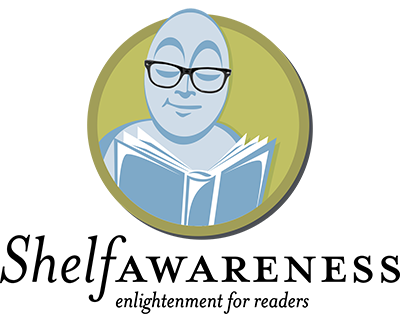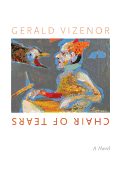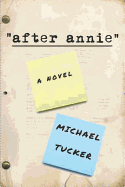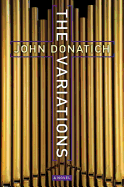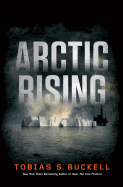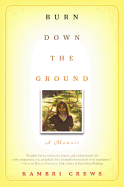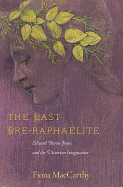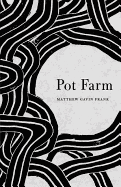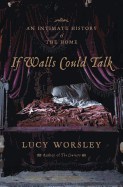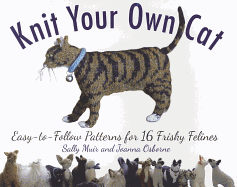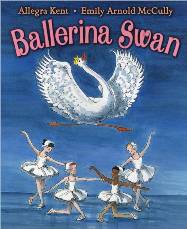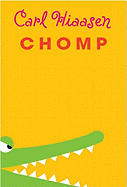Our editorial about snacking while reading evoked enthusiastic responses from many readers, and one, bookseller Rene Kirkpatrick, was inspired to write about the joys of re-opening books marked with stains that recall the moment of reading:
 I read at meals and on my walks (and in bed, during baths, waiting for people...) and find that I can finish a book just in snatches; books as snack rather than meal. I'm sure that others read like I do. If I read at a meal, I read until I am done with that meal. There have been times when lunch has lasted for hours; as long as I don't get up, the meal continues, the sun goes down....
I read at meals and on my walks (and in bed, during baths, waiting for people...) and find that I can finish a book just in snatches; books as snack rather than meal. I'm sure that others read like I do. If I read at a meal, I read until I am done with that meal. There have been times when lunch has lasted for hours; as long as I don't get up, the meal continues, the sun goes down....
If eating at the kitchen table, I set the book off to the side and use the butter dish, the salt and pepper shakers, an unused knife or another book to hold the one I'm reading open. I've never worried about smearing a corner with butter or a wine bottle's scarlet circle.
I've never been a clean reader. I don't borrow other peoples' books so have never worried about getting a book messy. I love re-opening a book and finding red splotches skipping across a page (spaghetti), rippled pages (walking and reading in the rain), brown thumbprints on the edges (mud), sand deep in the gutters (beach), pages unglued and then used as bookmark (pressing the book flat enough to hold it when there wasn't something else to do it), yellow and green smears (dandelion juice). Each of those stains has a specific memory attached to it so when I re-open the book, I am immediately thrust back to the time and the place where it was read.
I dog-ear books, I've lost more dollar bills using them as bookmarks, and when I worked at a bar in Eugene after bookstore hours, beer was sloshed. Every reading experience should be just that, an experience: awash in music, filled with weather and noise, a memory held close in every book.
After Annie
by Michael Tucker
Novels by performing artists should have a warning on the cover: "Open at your own risk." Often the reading experience can be dismal (see: Chuck Norris, Marlon Brando), but occasionally the rewards can be worth the risk (musician Steve Earle, master storyteller Steve Martin). Fortunately, After Annie, a first novel by actor Michael Tucker (LA Law), is among the latter. Having paid his writing dues in nonfiction (including the memoir Living in a Foreign Language), Tucker brings an easy nonchalance and wit to his story of a middle-aged New York actor drinking away the loss of his longtime wife to cancer. Deep in his vodkas neat, he confides to the beautiful bartender, "I'm like a little baby; I tipped over my crib and... I'm waving my arms and screaming my head off, but there's nobody who can set me up straight again."
It turns out the bartender aspires to serious theater after doing bit parts in musicals. Olive and her career become Herbie Aaron's cause and his salvation. He hooks her up with his agent, who gets her into an upstate, but high-powered, production of Chekhov's Uncle Vanya. Although Herbie runs off to Myrtle Beach to try to learn golf, he provides daily phone coaching for Olive--who has become both romantic fantasy and acting protégé.
There are no major denouements in Tucker's entertaining tale, but there are plenty of hands-on acting tips, backstage theater scenes and spirited sexual entanglements. "Write what you know" works well for Tucker, better than it has for many of his peers. --Bruce Jacobs, founding partner, Watermark Books & Cafe, Wichita, Kan.
Discover: An engaging first novel about an actor at the end of his career and another at the beginning of hers.
The Variations
by John Donatich
John Donatich's first novel (after the memoir Ambivalence, a Love Story) explores the spiritual and secular life of an ordinary parish priest at a failing church in New Haven, Conn. The Variations is a tale not of scandal and abuse but rather of a contemplative middle-aged man, Father Dominic, who, after a lifetime of poverty, obedience and chastity, finds himself losing his faith and questioning his calling. He fears that, like his seldom driven 12-year-old Mercury Sable, he is "more likely to die of old age than experience."
When Dom's beloved mentor Father Carl dies, he finds himself alone in the crumbling church, where "abandoned scaffolding sat against the wall, stripped of optimism," left to comfort the dwindling neighborhood parishioners--including a scattered runaway girl, Dolores, who claims to be pregnant by Carl. In dealing with Dolores, Dom is forced to deal with his own doubts: "exhausted by the pressure to be responsive to her need, whole before her despair, orthodox in his guidance, agnostic before her sexuality."
Donatich engagingly balances Dom's erudite religious ruminations with Dolores's street vernacular, the talented black organist's repetitive practicing of Bach's "Goldberg Variations," and the Manhattan banter of the ambitious magazine editor who beds him in a mutual seduction after he takes a sabbatical to assess his future. The attraction of the secular eventually pulls Dom from the priesthood, but not before Donatich reminds us that the Catholic Church still offers a credible path for many who long for the commitment of faith. --Bruce Jacobs founding partner, Watermark Books & Cafe, Wichita, Kan.
Discover: A debut novel about a Roman Catholic priest confronting the lures of the secular world.
Chair of Tears
by Gerald Robert Vizenor
The gullibility of cultural studies departments is an easy target for satire and, after a long and distinguished career of activism and teaching, Gerald Vizenor has surely earned the right to poke as many academic eyes as he wants. In the wacky yet insightful Chair of Tears, though, the former director of Native American Studies at UC Berkeley goes beyond merely tweaking egos, aiming instead to blow up the very concept of "Native American Studies"--and the practice of passing native experience under the Euro-American lens for inspection and appraisal along with it.
Vizenor's hero, Captain Shammer, was raised on a Lake Itasca houseboat and, in the sort of magical irony rampant in this short novel, becomes the department head of Native American Studies at the University of Minnesota. A trickster in the classic folklore sense, Shammer immediately turns the department on its head, introducing spurious cultural practices the credulous faculty members swiftly embrace as authentic Native traditions. Vizenor fires on multiple targets with wicked glee--one moment, he'll address the lack of Native Americans in Garrison Keillor's Lake Wobegon; the next, he'll introduce dogs trained to bark when they detect the absence of irony.
Vizenor has made a career of warring against the norms and paradigms that have created an "American Indian" identity and has little interest in cultivating a popular readership. Chair of Tears is a heavy read, full of complex cultural references, but it's often bitterly funny, proving once again that this seasoned provocateur has the irony dogs well under his command. --Cherie Ann Parker, freelance journalist and book critic
Discover: A wacky (and challenging) satire of Native American studies departments by a long-time gadfly.
Science Fiction & Fantasy
Arctic Rising
by Tobias S. Buckell
In the future of Tobias S. Buckell's Arctic Rising, climate change is real, it's happened, and the Arctic Circle has been transformed into a global center of commerce and economic power. When Anika Duncan's airship is shot down during a routine shipping flyover and her partner killed, she decides to figure out just what is going on and who is responsible.
Anika's search for revenge leads her to Violet, an independent businesswoman (and drug dealer) educated on the mean streets of Siberia who becomes Anika's main love interest, and Prudence, a dashing young mercenary-spy from the Caribbean with a knack for crowdsourcing and hacking--along with his obvious skill with boats and handguns. They're also the founders of a global corporation--Gaia--hell-bent on reversing the global warming trend, and threatening the companies and governments who control the newly uncovered oilfields.
Buckell's characters are convincing in their actions and apparent motivations, and the environments of Arctic Rising familiar to a modern audience yet still slightly foreign, with a ring of third-world authenticity. Anika is a multiracial lesbian aeronautical pilot, but her Nigerian ancestry and sexual orientation merely inform her character rather than overwhelm the story. Though occasional passages read like expository infodumps, for the most part, Buckell's story takes precedence over the whiz-bang ideas. The result is a human-sized tale of global politics and speculative technology that shows off the worldbuilding skills of a confident science fiction author. --Rob LeFebvre, freelance writer and editor
Discover: A strikingly recognizable near-future where an attempt to reverse global warming has devastating effects.
Biography & Memoir
Burn Down the Ground
by Kambri Crews
It's fair to say Kambri Crews had an unconventional childhood. Her parents (and maternal grandparents, and several other relatives) were deaf, so she took on a translator's duties from a young age. If that weren't enough, when she was seven, her family picked up and moved to a rural patch of woods in Boars Head, Texas, where their first order of business was to burn the undergrowth, clearing out the snakes. As her parents struggled to make ends meet, she ran wild, with little supervision. On top of everything else, there's her parents' dysfunctional relationship, which escalated so dramatically that when Kambri was a teen, her father tried to kill her mother.
This sounds very bleak, but Burn Down the Ground is no simple misery memoir. For one thing, Crews is very funny. (She runs a comedy-focused PR firm, and she's often performed as a comic storyteller.) She isn't entirely making light, though: she doesn't flinch from describing her father's violent attack on her mother, and she doesn't softball how the turmoil shaped her youth. (One of the book's most excruciating passages comes when she helps vandalize a childhood friend's abandoned home.) Ultimately, what makes this a moving, compelling memoir is that Crews hasn't limited herself to a single theme--whether it's deafness, life in the woods, domestic violence or having a parent in prison. Instead, she's drawn upon all of them and produced a nuanced, self-aware account that does justice to her complicated childhood. --Kelly Faircloth, freelance writer
Discover: A multifaceted memoir of love, abuse and--most of all--resilience.
The Last Pre-Raphaelite: Edward Burne-Jones and the Victorian Imagination
by Fiona MacCarthy
Edward Burne-Jones's haunting paintings are among the most recognizable in English art history; as a creative partner in Morris & Co., he was a significant influence on the "look" of the late 19th century. In The Last Pre-Raphaelite, Fiona MacCarthy (who previously wrote a life of William Morris) depicts Burne-Jones's rise from a penniless striver to nationally renowned luminary, filling her account with all sorts of tiny details (such as his intense dislike of unattractive cleaning ladies). The picture that emerges is that of a fascinating, creative character prone to nervous breakdowns and marital strife, but also possessed of great talent and a charmingly goofy sense of humor. While deadly serious about his aesthetics, Burne-Jones was also a prolific doodler, often caricaturing his own scrawniness and "Topsy" Morris's roly-polyness.
Besides covering names, dates and places, MacCarthy situates Burne-Jones in the broader artistic and cultural ferment of his age. Born in 1833 in rough-and-tumble Birmingham, he had a front-row view of the industrial revolution and proved an important figure in the cultural reaction to that upheaval. As the title suggests, MacCarthy addresses the Pre-Raphaelite Brotherhood (of which Burne-Jones was a junior member) at length, with a similarly rich discussion of the aesthetic movement (of which Burne-Jones was a leading light). She also tracks the artist's influences--from continental tours sponsored by critic John Ruskin to his decades-long, often-fraught working relationship with William Morris--in great detail. It's no quick read, but The Last Pre-Raphaelite will reward those with patience and a passion for 19th-century art and history. --Kelly Faircloth, freelance writer
Discover: An intimately detailed record of a 19th-century artist's personal and professional ups and downs.
Pot Farm
by Matthew Gavin Frank
Vagabond, foodie, poet and professor Matthew Gavin Frank left his vigil at the bedside of his finally stabilized cancer-stricken mother in his home town Chicago and, like Huck Finn, "[lit] out for the territory ahead of the rest." In his case, the territory was a medicinal marijuana farm in Mendocino County, Calif.; the resident yoga instructor had called to offer him a seasonal stint working "the grow" at the farm of a buxom Janis Joplin lookalike named Lady Wanda.
The legal pot farm is a relatively new phenomenon, but Wanda's motley work crew seems very much out of the illegal communal dope farms of the Wavy-Gravy 1960s. Frank's funny Pot Farm, admittedly influenced by a taste of the harvest and some James Frey stretching of the facts, tells the stories of these mostly nicknamed renegades: Charlie the Mechanic, Crazy Jeff, Hector the Tree Sniper, Lawn Mower Man and, of course, earth mother Lady Wanda herself--"her cleavage as deep as a well, ample enough to house not only a few coins, but my entire bank account."
The memoir's season of weed, however, is not all smoking, jiving and sleeping in a tent. Legal marijuana is big business; from the grows to the dispensaries, it throws $1.7 billion into the Mendocino County economy. It requires hard hand labor and careful pruning, cutting and processing. Because the state and federal laws conflict, any day the crop could be confiscated by the DEA ("Johnny Screw" as Wanda calls it) and the whole crew arrested. But with ganja clippers in his calloused hands, Frank covers it all in this entertaining adventure. --Bruce Jacobs, founding partner, Watermark Books & Cafe, Wichita, Kan.
Discover: A slightly cockeyed memoir of a season on a (mostly) legal pot farm in California.
History
If Walls Could Talk: An Intimate History of the Home
by Lucy Worsley
Historian Lucy Worsley (The Courtiers) takes readers on a tour of the innermost sanctions of the English home, exploring "what people actually did in bed, in the bath, at the table and at the stove." If Walls Could Talk reveals how separate rooms evolved from the semi-communal homes of medieval times, where people "simply had a living space in which they happened to rest--or eat, or read, or party--and they used the same room for everything." History buffs and those intrigued with quirky and trivial details will learn how commoners and kings performed all the natural functions of the body. For example, Henry VIII's bath water traveled three miles before reaching his round wooden tub, and his close stool, "a padded, seat-less chair placed over a pewter or ceramic chamber pot," was "stuffed with swansdown, covered with velvet and decorated with gilt nails and fringes."
From messy and prolonged Tudor births and breastfeeding to the Victorian wife whose "cares were to be kept to herself rather than shared with her busy, important, money-earning husband," Worlsey discusses advancements made in all the domestic arenas. Leading readers through the centuries, room by room, she describes the advent of special sitting-room furniture, the accumulation of "stuff" to show off one's wealth and education levels and how "the kitchen has been the scene of vicious class and gender battles." Overflowing with specifics, If Walls Could Talk is a fly's perspective on the messy nuances of life in an English home. --Lee E. Cart, freelance writer and book reviewer
Discover: An in-depth, personal look at the evolution of the English household.
Psychology & Self-Help
The Mindfulness Prescription for Adult ADHD
by Lidia Zylowska; foreword by Daniel Siegel
One of the first news stories of 2012 reported that the previous year's shortages of the medication Adderall would continue and likely worsen. Adderall is a stimulant medication used primarily in treatment for Attention Deficit Hyperactivity Disorder (ADHD) in millions of Americans. With the availability of one of the primary treatments in doubt, a great many people stand to benefit from Lidia Zylowska's eight-step program for applying mindfulness to relieve symptoms associated with the disorder. Readers familiar with Jon Kabat-Zinn's pioneering studies in Mindfulness-Based Stress Reduction and his following books will find Zylowska's work familiar. Rather than letting our minds get tangled in concerns about recent events or projections about what may happen--whether planning a response in a conversation or worrying about the distant future--mindfulness involves remembering to bring your attention to what's happening in the here and now.
The writing nicely balances a thoughtful, comprehensive presentation of the various aspects of a mindfulness practice with a format geared toward making the content accessible for readers seeking to learn self-treatment skills. Nearly every page features bulleted lists, short paragraphs and narrative-form stories about mindfulness and ADHD. Structured to be accessible for its target audience, this supportive guide to managing ADHD through mindfulness offers a clear and detailed program for putting an effective treatment in the hands of consumers and is a great contrast to the many didactic, jargon-laden self-help books available. --Matthew Tiffany, counselor, writer for Condalmo
Discover: A clear and supportive guide for ADHD sufferers who want to learn self-treatment skills.
House & Home
Knit Your Own Cat: Easy-to-Follow Patterns for 16 Frisky Felines
by Sally Muir and Joanna Osborne
Cats pride themselves on having the final say, so Sally Muir and Joanna Osborne were destined to follow up their Knit Your Own Dog with a feline version. If you're not a "cat person" (or even adept at needlework), you'll still want to adopt the charming little Knit your Own Cat, if only for the authors' delightful word play ("...make them all and be a knitting Pussy Galore.")
Sixteen breeds are divided into four categories: long- and short-haired, exotic and "street." An index of thumbnail photos provides quick references, but the British needleworkers offer clear instructions and tips for adding unusual characteristics to your creation, so although the basic four-paws, tail and whiskers format is repetitive, each kitty in your litter can be special. (Stuff her with rice to add weight, and when you pick her up she'll feel like she's asleep! A pipecleaner in the tail can provide endless variations on the cat's attitude, be it prowling or napping.)
Cat trivia--from the breeds favored by royalty to cat-held records (weight, rodent-kills) to the pesky pet who forced Newton to build the first cat door--introduce every pattern, sometimes stretching credibility but always adding interest. Crisp photos will assist a knitter curious about the exact techniques and are entertaining for the casual reader. Guaranteed allergy-free, this passel of kitties is as much fun as the bunch from Broadway--be prepared to find yourself humming "Memory" as you knit!--Cheryl Krocker McKeon, bookseller
Children's & Young Adult
Ballerina Swan
by Allegra Kent, illus. by Emily Arnold McCully
With humor and a light touch, first-time children's author and Balanchine ballerina Allegra Kent celebrates the rewards of persistence and practice.
Every day from her pond in a city park, Sophie the swan watches the graceful dancers in Madam Myrtle's Dance Studio. One day, Sophie sneaks into class and, although Madam Myrtle won't let her stay, the swan finds her opening when substitute teacher Miss Willow allows her to participate.
Caldecott Medalist Emily Arnold McCully (Mirette on the High Wire) exploits the comic opportunities of a swan in ballet class. In Sophie's attempts at a series of pliés, she looks more pelican-like than prima ballerina, and Miss Willow tells Sophie "to work on your turnout" (i.e., her webbed feet placement). Like every dancer, Sophie discovers moves at which she excels (like the grand jeté) and others that need work. But Sophie proves her commitment by repeating the steps until she masters them all. Vignette illustrations emphasize her hard work, and an image of her with a pink iPod is priceless. Even Madam Myrtle softens up.
Sophie proves where there's a will, there's a way--especially if you're willing to put in some practice time. Every girl who has ever taken ballet class will recognize herself in these lively and lighthearted pen-and-ink and watercolor scenes, and those who haven't will find the humor in Sophie's plight. --Jennifer M. Brown, children's editor, Shelf Awareness
Discover: A tale of a swan who dreams of dancing in a ballet, which combines humor and the rewards of hard work.
Chomp
by Carl Hiaasen
Carl Hiaasen (Hoot) combines the humor of the backstage workings of a reality show with weightier themes in what may be his best book for young people yet.
Wahoo Cray has been the man of the house ever since his father, Mickey, a professional animal wrangler, received a concussion when a frozen iguana fell from a palm tree during a Florida hard freeze. Wahoo's mother heads to China to teach Mandarin Chinese to businessmen and help pay the family's mortgage while her husband recovers. One day, Wahoo answers a call from Derek Badger, star of a reality show in which Badger faces fierce animals in the wilderness. Badger wants to wrestle the Crays' alligator, Alice. Wahoo accepts the $1,000-a-day job. At least half the fun of the novel derives from the clash between Mickey, a true nature lover, and showboater Badger. After Badger nearly drowns "riding" Alice, doing everything Mickey told him not to do, things get really out of hand when Badger decides he wants to wrestle untamed creatures in the Everglades and brings Mickey and Wahoo along.
Hiaasen keeps many balls in the air, then brings them all in for a safe and wholly entertaining landing. He renders his portrayals of the adults as fully as he does the children. While there's plenty of humor at Badger's expense, even the narcissistic reality show host reveals some redeeming qualities. With his compassion for Florida's hard-hit citizens and his awe of its natural wonders, Hiaasen may have outdone himself with this exceptional novel. --Jennifer M. Brown, children's editor, Shelf Awareness
Discover: A father-son team gets drafted for an out-of-control nature reality show in Hiaasen's best book for young people yet.

